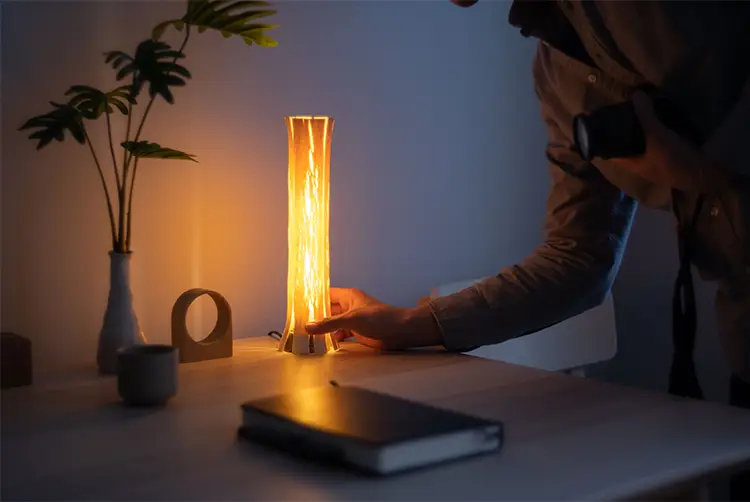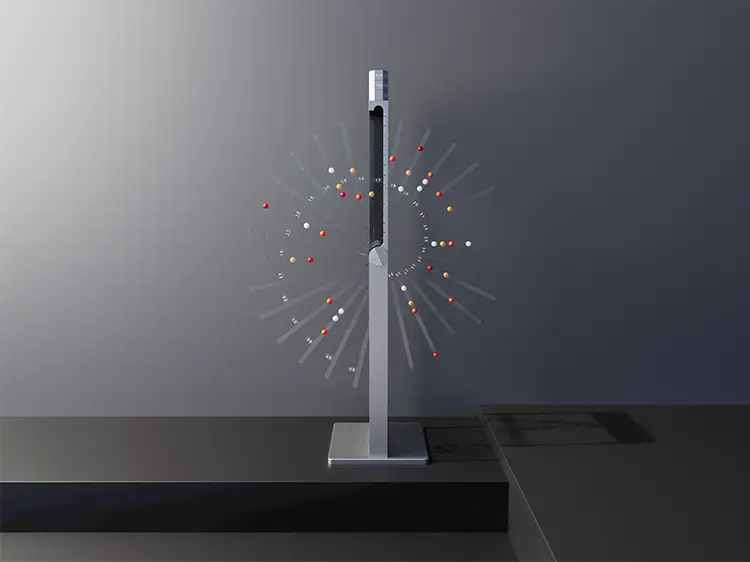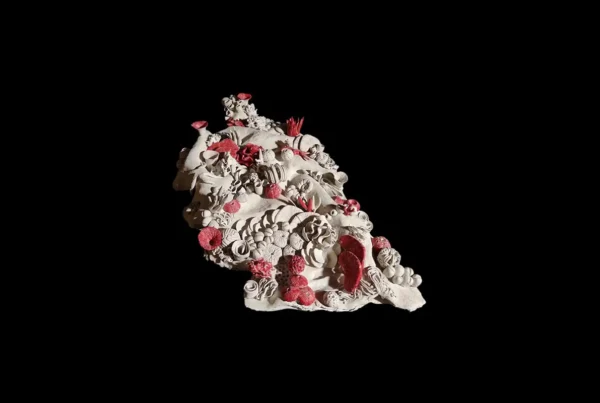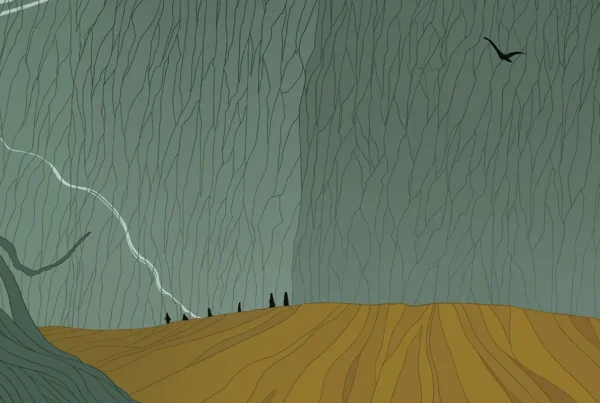“Every designed object is a convex ideological mirror, amplifying its creators’ minds and practices.”
Crafted Dualities: The Designer Bridging Nature and Industry
Jia-Sheng Chen, known professionally as Johnny Jiasheng Chen, stands at a compelling intersection between design innovation and artistic inquiry. Born in Taiwan and currently based in Los Angeles, Chen has developed a multifaceted creative identity as both a designer and artist. With a foundation that includes a BFA in Product Design from Ming Chuan University, postgraduate research in Industrial Design from Taiwan Tech, and a Master of Design from the School of the Art Institute of Chicago, his journey is defined by both academic rigor and personal exploration. As the founder of Forenext Design Studio and a professional lighting designer at WAC Lighting, Chen has crafted a unique voice in contemporary design that challenges conventional boundaries while remaining deeply rooted in purpose.
His upbringing in Taiwan’s rural environments plays a significant role in shaping the lens through which he views and constructs his work. Childhood moments immersed in nature—running through forests and exploring rivers—left a permanent imprint, cultivating an early fascination with life forms and materials. These experiences, in combination with his cross-cultural professional path, instilled in him a powerful sense of empathy and contextual awareness. Chen sees designed objects not as static fixtures, but as ideologically charged reflections of their creators. Each piece, in his view, is a declaration of intention, and through his work, he seeks to decode and reinterpret these intentions in service of both society and the environment.
The ethos guiding his creative process is deeply philosophical. Chen believes that each man-made artifact is a mirror that reveals the values and mindset of its maker—an extension of human cognition materialized through design. His artistic vision challenges observers to consider the unseen dimensions of the objects that populate their lives. By offering alternate approaches and perspectives, he reframes the idea of function and value in a rapidly evolving world. Whether addressing ecological relationships, social structures, or abstract human behavior, his works urge the audience to pause and ask: What was the intent behind this? And what future could it point us toward?

Jia-Sheng Chen: Reimagining Meaning Through Speculative Design
In Chen’s expanding body of work, one constant is the refusal to settle on a single aesthetic or discipline. Rather than aligning with a fixed artistic style, he adapts his visual language to meet the conceptual needs of each project. His eclectic approach draws on a wide spectrum of historical and contemporary influences. He gravitates toward the organic fluidity of Art Nouveau, the structural clarity and intellectual rebellion of Bauhaus, and the mechanical elegance of Kinetic Art. For Chen, each of these movements represents not just visual inspiration but ideological fuel—tools to think differently and critically about the world around him. His current fascination lies in speculative design, where imagination becomes the vehicle for social reflection and future-making.
This speculative mode empowers him to conceptualize designs that might not exist yet but should. He believes this ability to imagine the non-existent is one of humanity’s greatest assets—and responsibilities. His projects often operate as thought experiments, provocations that aim to shift perception rather than merely decorate space. For example, his concept “Plan B” embodies this philosophy. Though not yet realized as a large-scale installation, it represents his ambition to engage the public in participatory reflection on issues that matter. The project’s core message—that there is always an alternative path—encapsulates Chen’s desire to challenge passivity and promote active engagement through design.
His vision extends far beyond the gallery or studio. Chen dreams of creating expansive, interactive public installations—spaces where people from all walks of life can encounter art as a living dialogue rather than a passive display. This ambition is not rooted in self-promotion, but in the hope of catalyzing collective insight and awareness. While current professional obligations keep such dreams on hold, he sees each project as a step toward that larger goal. Whether working with biodesign, recycled plastics, or custom lighting, Chen treats every medium as a tool for communication, each one selected with intent and adaptability rather than allegiance to tradition.

The Architecture of Influence and Intuition
The evolution of Chen’s practice owes much to his openness toward different disciplines and the figures who have shaped design history. Among his greatest influences is American architect Frank Lloyd Wright, whose ability to marry structural innovation with philosophical depth left a lasting impression on Chen. Wright’s timeless works demonstrated that design could be both utilitarian and transcendent—deeply functional yet poetic in form. Chen sees Wright not only as a pioneer in spatial design but as someone who embedded belief systems into material structures, a methodology that resonates strongly with his own ideology. Just as Wright used architecture to express values, Chen uses objects and installations to reflect on collective consciousness.
Another key source of inspiration is Alexander Calder, particularly his kinetic sculptures that use air and motion to animate space. Chen is deeply moved by Calder’s ability to transform static material into dynamic, breathing expressions of balance and interaction. For Chen, the beauty of these works lies not in their composition alone, but in their capacity to change and respond—to shift with time, touch, and presence. Calder’s approach reaffirms for Chen that movement and interaction can serve as profound artistic elements. His own interest in kinetic components echoes this belief, as he often incorporates motion to encourage audience engagement and invite new interpretations.
Chen’s practice is also informed by hands-on experimentation. His workspace is filled with prototypes, physical fragments, and salvaged components—from lighting elements to chandelier frames—each waiting to be transformed. He relies heavily on tactile exploration to refine proportions and structures. While he thrives in solitude during the creation process, he also champions collaboration, recognizing that meaningful innovation often arises from shared energy and diverse perspectives. This balance between introspection and teamwork further enriches his work, making each project a convergence of individual vision and communal resonance.

Jia-Sheng Chen: Crafting Futures in Form and Function
Medium selection in Chen’s practice is fluid, responsive to the demands of each idea rather than dictated by preference. From biodesign to ceramics, recycled plastics to metals, he moves effortlessly across material boundaries. This resistance to confinement is intentional—he regards any limitation in medium as a prompt to explore new possibilities. The materials themselves are not just structural components but vehicles for meaning. By diversifying his material palette, Chen ensures that his concepts are expressed in the most fitting and impactful ways, allowing form to serve thought rather than restrict it.
His willingness to continually evolve keeps his artistic vocabulary fresh and unpredictable. Chen approaches every new project as a question rather than a statement, a process of inquiry rather than assertion. This mindset pushes him to remain open, both to technological advances and to shifts in cultural context. He sees material experimentation not as a detour from artistry but as a critical part of it—each new medium offering a different lens through which to explore humanity, ecology, and social systems. This adaptability also ensures his relevance in a field that increasingly values interdisciplinary thinking and environmental accountability.
Looking ahead, Chen’s desire to create a large-scale public installation remains one of his most aspirational goals. While his professional trajectory currently leans toward industrial design and product development, he continues to cultivate ideas that speak to broader audiences. His ideal installation would invite viewers to engage physically and emotionally, offering an experience that not only stimulates but also educates and transforms. Projects like “Plan B” illustrate the potential of such work—offering critical reflection wrapped in beauty, interaction, and innovation. Whether through speculative design or architectural-scale installations, Jia-Sheng Chen is steadily building a practice rooted in intention, guided by inquiry, and driven by a deep respect for the interconnectedness of all things.






